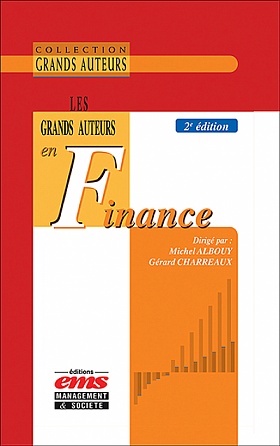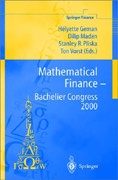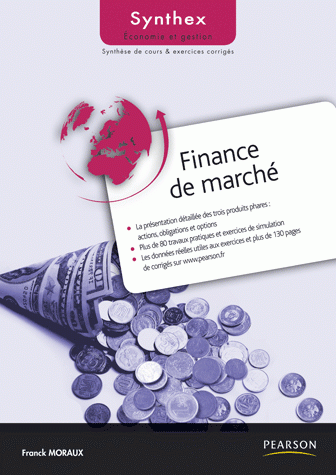RESEARCH
The true delight is in the finding out rather than in the knowing - Asimov.
The saddest aspect of life right now is that science gathers knowledge faster than society gathers wisdom - Asimov.
All models are wrong but some are useful - George Box
------------------------------------------------------------------------------------------------------------------------------------------------------------
General information
Chapters in (research) monographs and articles in
proceedings
Working paper (still) in progress or submitted
Contributions to research projects
------------------------------------------------------------------------------------------------------------------------------------------------------------
GENERAL
INFORMATION
| Research
areas: Financial Engineering* for decision-making,
pricing & (financial) risk management. *methods and
contracts Favorite approach: continuous-time stochastic finance. Favorite securities: Derivatives and bonds. Derivatives are a) structured products written by financial institutions & 'proposed' to consumers by banks and insurance companies, or included by firms in debt contracts, compensation packages, supply chain contracts...; b) tools useful for corporate decision-making (to finance, to invest, to manage financial risks...), firm valuation (start-ups, pharmas, R&D). Here, real options play a special role in analyzing investment opportunities and flexibility. Research philosophy: Positive & normative approaches. Contributions to research projects: see bottom of this page. |
PUBLICATIONS (downloadable below or available upon request)
|
Moraux, F.,
D.A. Phan, T.L.H. Vo (2023): “Collaborative Financing and Supply
Chain Coordination for Corporate Social Responsibility”.
Economic Modelling, 121, 106198, https://doi.org/10.1016/j.econmod.2023.106198.
Recent
research in the field of Supply Chain Management shows
that collaborative financing and coordination can
separately improve Corporate Social Responsibility (CSR)
of the supply chain (SC). This article examines how
Reverse factoring (RF) and Cost-Sharing contract (CS)
initiated by a large creditworthy retailer interact and
can help SC to address the various challenges posed by
CSR, especially for small-and medium-sized suppliers
with limited working capital. We find that, compared to
the traditional Bank financing (BF), RF can
simultaneously lead to greater CSR effort and higher
profits for all supply chain members. We highlight
nevertheless how some factors such as the market demand
uncertainty, the interest rate charged by the respective
banks and the bankruptcy risks of the supplier or the
retailer, determine the adoption and the benefits of the
financing devices. Our managerial implications include
the
fact that combining collaborative financing and
coordination can simultaneously be profitable for all
members of the SC and incentivize the supplier to raise
his CSR effort. Specifically, a CS contract associated to
an appropriate financing mechanism can help to improve CSR
and the profitability of the SC. |
|
|
Silaghi F., F. Moraux. (2022) “Trade credit contracts: Design and
regulation”.
European Journal of Operational Research.
296(3), 980-992. DOI:10.1016/j.ejor.2021.04.036.
halshs-02283374
This
paper provides a theoretical analysis of trade credit
within a real options framework. We show that under
trade credit the buyer delays the decision to stop
production, getting closer to the supply chain optimal
stopping decision. Therefore, trade credit may serve as
a coordination device. The supplier can optimally choose
to offer trade credit for free, since this will
guarantee her business for a longer period of time.
Optimal trade credit design is analyzed for an
integrated supply chain (cooperative solution) and for
external procurement (Nash bargaining and Stackelberg
solutions). When regulation imposes a limit on trade
credit maturity, the wholesale price is reduced, trade
credit decreases and internal procurement increases. The
model’s predictions are in line with recent empirical
evidence on the effects of regulation in the retail
industry.
|
|
| Grishchenko O., F. Moraux and O. Pakulyak (2020) “Fuel up with OATmeals! The
Case of the French Nominal Yield Curve”.
The Journal of Finance and Data Science, 6, 49-85.
DOI:10.1016/j.jfds.2020.07.001. We
construct the French nominal yield curve using Svensson
(1994) methodology and all available public data of
French nominal government debt securities -- Obligations
Assimilables du Tresor (OATs). Our sample period starts
in October 1987 and ends in April 2018. We find that the
functioning of the French sovereign bond market has
improved dramatically following the onset of the euro
area and has been functioning reasonably well since
then, with the exceptions of the Global Financial Crisis
period and the European sovereign crisis period. We also
find that, the French nominal on-the-run securities
have, on average, a negligible liquidity premium, in
sharp contrast to the U.S. nominal Treasury market,
where such a premium is sizable. On average, the level
and the slope of the French zero-coupon rates have been
decreasing since the Global Financial Crisis.
Data of this article can be downloaded from the open science platform ZENODO. Yield curves https://doi.org/10.5281/zenodo.4292379, Instantaneous forward rate curves: https://doi.org/10.5281/zenodo.4292386. Par-yield curves https://doi.org/10.5281/zenodo.4292511 NOTE: Data are regularly up-dated there => France Treasury Instantaneous Forward Rates, France Treasury Nominal Zero-Coupon Yield Curves, France Treasury Nominal Par Yield Curves, |
|
|
Detemple J., S. Laminou Abdou, F. Moraux. (2020) “American Step Options”.
European Journal of Operational Research, 282
(1), pp.363-385. DOI:10.1016/j.ejor.2019.09.009.
halshs-02283374
This
paper examines the valuation of American knock-out and
knock-in step options. The structures of the immediate
exercise regions of the various contracts are
identified. Typical properties of American vanilla
calls, such as uniqueness of the optimal exercise
boundary, up-connectedness of the exercise region or
convexity of its t-section, are shown to fail in some
cases. Early exercise premium representations of step
option prices, involving the Laplace transforms of the
joint laws of Brownian motion and its occupation times,
are derived. Systems of coupled integral equations for
the components of the exercise boundary are deduced.
Numerical implementations document the behavior of the
price and the hedging policy. The paper is the first to
prove that finite maturity exotic American options
written on a single underlying asset can have multiple
disconnected exercise regions described by a triplet of
coupled boundaries. here
|
|
| Moraux
F. (2019): “On Bankruptcy Procedures and the
Valuation of Corporate Securities”, Finance,
40(3), pp.141-191. ⟨10.3917/fina.403.0141⟩.
⟨halshs-02402128⟩
URL :
https://www-cairn-info.fr/revue-finance-2019-3-page-141.htm. This
paper extends the contingent claims analysis of
Black-Scholes-Merton-Cox to account for the existence of
a court-supervised bankruptcy procedure that is
exclusively based on the time spent by the firm in
distress. I provide some distribution-free results and
analytical formulae that are very useful for pricing
corporate securities. I highlight a number of price
effects of the bankruptcy procedure and show, for
instance, that the credit spreads can decrease or
increase with respect to the grace delay depending on
the subordination feature of the corporate debt. Senior
creditors should in turn worry about the effective
enforceability of their safety covenant. Numerical
experiments suggest that any effort to reinforce a
safety covenant ex ante may be swept quite
easily by a grace delay granted by a Court ex post.
Finally, I discuss the portfolio management of corporate
securities when portfolios are internationally
diversified and I show how a portfolio manager can
extend the initial one-country setting to a
multi-country setting with different bankruptcy codes.
|
|
| Hainaut D., F. Moraux (2019): “A switching self-exciting jump
diffusion process for stock prices”, Annals
of Finance, 15(2),
267-306. DOI 10.1007/s10436-018-0340-5 This
study proposes a new Markov switching process with
clustering effects. In this approach, a hidden Markov
chain with a finite number of states modulates the
parameters of a self-excited jump process combined to a
geometric Brownian motion. Each regime corresponds to a
particular economic cycle determining the expected return,
the diffusion coefficient and the long-run frequency of
clustered jumps. We study first the theoretical properties
of this process and we propose a sequential Monte-Carlo
method to filter the hidden state variables. We next
develop a Markov Chain Monte-Carlo procedure to fit the
model to the S&P 500. We find that self-exciting jumps
occur mainly during economic recession and nearly
disappear in periods of economic growth. Finally, we
analyse the impact of such a jump clustering on implied
volatilities of European options.
|
|
| Hainaut D., F. Moraux (2018): “Hedging of options in presence of
jump clustering”, Journal of Computational Finance, 22(3), 1-35. This
paper analyzes the efficiency of hedging strategies for
stock options, in presence of jump clustering. In the
proposed model, the asset is ruled by a jump discusion
process wherein the arrival of jumps is correlated to the
amplitude of past shocks. This feature adds feedback
effects and time heterogeneity to the initial jump
diffusion. After a presentation of main properties of the
process, a numerical method for options pricing is
proposed. Next, we develop four hedging policies
minimizing the variance of the final wealth. These
strategies are based on first and second order
approximations of option prices. The hedging instrument is
either the underlying asset or another option. The
performance of these hedges is measured by simulations for
put and call options, with a model fitted to the S&P
500.
|
|
| Leblon G., F. Moraux (2017): “Analytical Pricing of European Bond
Options within One-Factor QTSMs”, Journal of Derivatives, 24(3), 29-41. This
paper derives analytical formulae for the pricing of
European bond options in one-factor Quadratic frameworks.
For valuing European options on coupon bonds, we provide
necessary and sufficient conditions to use the famous
Jamshidian trick. Finally, we question admissibility of
these conditions and show they are consistent with real
data.
|
|
| Laminou Abdou S., F. Moraux (2016): “Pricing
and Hedging American and Hybrid Strangles with Finite
Maturity”, Journal of Banking and Finance, 62, 112–125. This
paper introduces variants of strangles, called
Euro-American or hybrid strangles, and it promotes a new
numerical pricing technique. We highlight and compare the
properties of European, American, and hybrid strangles
with pricing and hedging in mind. The new quadrature
approach we propose can account for systems of coupled
integral equations that locate the early exercise
boundaries of finite-lived contracts. We show that this
method is efficient, accurate, and fast for pricing all
types of early exercisable strangles. Other advantages of
this technique are that it avoids the non-monotonic
gradient problem faced by others and it allows users to
control for errors. We then investigate the hedging of all
strangles, we derive analytical expressions for some Greek
parameters, and we stress how these parameters can differ
(or not) from each other. here.
|
|
| Debon M., F. Moraux, P. Navatte
(2015): “Le coût du financement par obligations rachetables
: Une étude empirique”, Finance,
Contrôle
et Stratégie, 18(2). Cet article étudie le coût de financement par obligations rachetables à l'aide d'un échantillon de 2927 émissions américaines émises au pair entre 1984 et 2014. Notre modèle de régression indique que le recours à des obligations rachetables, plutôt qu'à des obligations ordinaires, a coûté en moyenne 10 % du taux de coupon payé par les émetteurs mais également que le surcoût de financement peut fortement varier dans le temps. Les modèles de décomposition de différences de moyennes de Blinder-Oaxaca et de Winsborough-Dickinson suggèrent de leur côté qu’une bonification existerait pour les émetteurs de dette rachetable. here |
|
| Bernard C., F. Moraux,
L. Rueschendorf, S. Vanduffel
(2015): “Optimal payoffs under state-dependent preferences”,
Quantitative Finance, 15(7), 1157-1173 (arxiv) Most decision theories, including expected utility theory, rank dependent utility theory and cumulative prospect theory, assume that investors are only interested in the distribution of returns and not in the states of the economy in which income is received. Optimal payoffs have their lowest outcomes when the economy is in a downturn, and this feature is often at odds with the needs of many investors. We introduce a framework for portfolio selection within which state-dependent preferences can be accommodated. Specifically, we assume that investors care about the distribution of final wealth and its interaction with some benchmark. In this context, we are able to characterize optimal payoffs in explicit form. Furthermore, we extend the classical expected utility optimization problem of Merton to the state-dependent situation. Some applications in security design are discussed in detail and we also solve some stochastic extensions of the target probability optimization problem. here |
|
| Fouilloux J., F. Moraux, JL
Viviani (2015) “Investing in Finite-Life Carbon Emissions
Reduction Program under Risk and Idiosyncratic Uncertainty”,
Energy Policy, 82, 310–320. This paper aims at emphasizing the ability of new frameworks of real option model to highlight key characteristics of industrial Carbon Emissions Reduction Program investment decision. We develop both theoretical arguments and numerical simulations with structural parameters calibrated on real-life data. We find that both radical uncertainty and risk lead to speed-up green investments, compared to the predictions of real option models that are normally used in green investment literature. The conventional “wait and see” attitude, questioned in recent developments of the real option theory, is not validated. In conclusion, our results should foster companies to implement green investments and help governments to define appropriate incentives to encourage green investments. Of particular note, the paper highlights that finance theory is not necessarily an obstacle to green investment decisions. here |
|
| F. Moraux, P. Navatte (2015) :
“How do Reservation Prices Impact Distressed Debt
Rescheduling?”, Economic
Modelling, 46, 269–282. pdf This paper is the first to investigate rescheduling of distressed corporate debt when both the representative shareholder and the creditor face reservation prices. Parties expect from rescheduling both recovery and growth, but reservation prices are key dimensions to consider in the analysis in order to assess the opportunity and to design the new financial set-up. For reservation price, creditor may have in mind the liquidation value of the firm he can get by a strict enforcement of his contractual rights in court. The shareholder requires from rescheduling the recognition of her risky, specific and important (financial and intangible) involvements in the future. To shed lights on rescheduling with reservation prices, we develop first a general parsimonious distribution-free structural framework. We derive sufficient conditions for rescheduling to take place and highlight situations where no rescheduling can occur. We characterize cases where rescheduling is for the creditor possible but suboptimal. So the shareholder's reservation price can dramatically restrict the set of possible extensions and it does matter for the creditor. We then restrict our setting to undertake numerical analysis, our benchmark being the canonical rescheduling model of Longstaff (1990). Here, we can explore with simulations feasibility and optimality of rescheduling for different magnitudes of reservation prices and different firm's profiles. We finally investigate various concerns related to rescheduling such as agency costs, exit from no-rescheduling situations and bargaining between stakeholders. We find and discuss different ways to lower the shareholder's reservation price. here. |
|
| F. Moraux, F. Silaghi (2014): “Inside debt
renegotiation: Optimal debt reduction, timing, and the
number of rounds”, Journal
of Corporate Finance, 27, 269–295. This paper develops a model of debt renegotiation in a structural framework that accounts for taxes, bankruptcy costs and renegotiation costs. To our knowledge, all the previous work on debt renegotiation implies an infinite number of renegotiations. This feature preempts the analysis of the optimal number of renegotiations. We address this drawback by incorporating fixed renegotiation costs in a model of multiple renegotiations, hence obtaining a small finite number of renegotiations. Simple analytical formulae are derived for debt and equity, as well as implicit formulae for the coupon reduction, as a result of a backward recursive technique. The results show that the optimal number of renegotiations, the size and the dynamics of the coupon reductions depend critically on the bargaining power of the claimants. Testable empirical implications regarding multiple costly renegotiations are drawn. here. |
|
| F. Moraux, P. Navatte (2013) "Strategic Management
of Private Benefits in a Contingent Claim Framework", Bankers, Markets &
Investors, 122, 9-15. (pdf,
Warning there are uncorrected typos in the printed version
=> here). This article analyzes effects of private benefits. We compare the benchmark case (with no private benefit) to a couple of situations where collusions make extraction of private benefits possible. E.g., an ex ante agreement may lead to an adjustment of the firm’s business risk so as to render private benefits innocuous for minority equityholders. We highlight how agreements with minority shareholders or alternatively with creditors can lower the other stakeholders’ wealth. Among other things, we find that private benefits increase default risk and therefore impact all stakeholders of the firm (including suppliers, customers and employees). We investigate situations where managers enjoy a retirement plan. We finally convert private benefits into a premium for the share price, if a control block of shares is to be evaluated. Overall, our results suggest that covenants in loan contracts and/or shareholder activism may limit strategic behaviours and lower or even prevent private benefits. |
|
| F. Moraux (2011)
"How valuable is your VaR? Large Sample Confidence Intervals for
Normal VaR", Journal of
Risk Management in Financial Institutions, 4(2),
189-200. (pdf)
Little is known about the distribution of the ‘value-at-risk’ (VaR) estimate and the associated estimation risk. In the case of the normal VaR, the key problem comes from the fact that it is estimated using a couple of parameters whose estimates are distributed differently. Previous research has either neglected uncertainty around the mean parameter, or resorted to simulations. By contrast, this paper derives analytical results for the normal VaR with the help of asymptotic theory and the so-called ‘delta method’. Properties of the estimation errors are then explored in detail and the VaR estimation risk is broken down into its various components. It is then shown, among other things, that the fraction of error owing to mean uncertainty is limited in a prudential context. In other words, the approximate approach defended by Jorion and Chappell and Dowd is shown to still be relevant. |
|
| F. Moraux (2010) "Sensitivity Analysis of Credit Risk Measures in the Beta Binomial Framework", Journal of Fixed Income, 19(3), 66-76. (pdf). This article reconsiders the beta binomial approach for modeling default risk in a homogenous credit portfolio. It first introduces a new parameterization of the beta mixing distribution that is now a function of the common default probability and the common default correlation. It then focuses on the correlation parameter and derives closed-form expressions for sensitivities of key credit risk indicators. Results of the sensitivity and elasticity analysis show that the common default correlation impacts the credit at risk and expected shortfall quite differently. The article also examines an application on CDOs to highlight the key role of the common default correlation on the different tranches. | |
| F. Moraux
(2009) "Continuous Barrier Options", Journal of
Derivatives and Hedge Funds,15(3),
215-222. (pdf). |
|
| F. Moraux,
P. Navatte (2009) "On the Pricing and Design of
Debt-Equity Swaps for Firms in Default", Bankers, Markets and
Investors, (november-december),
4-13.(pdf) |
|
| F. Moraux (2009) "On Perpetual American Strangles", Journal of Derivatives, SUMMER, 16(4), 82-97. (pdf). oach for modeling default risk in a homogenous credit portfolio. It first introduces a new parameterization of the beta mixing distribution that is now a function of the common default probability and the common default correlation. It then focuses |
|
| A. Miloudi, F. Moraux (2009)
"Relations Between Corporate Credit Spreads, Treasury Yields
and the Equity Market", International Journal of Business, 14(2), 105-122 (pdf) This paper examines the complex relations existing between corporate credit spread indices and theTreasury and Equity markets. A Cointegration Analysis reveals that a long-run relation exists and that some of these connections are credit sensitive. Mainly, it appears that the equilibrium elasticity of credit spread indices to the stock market is a function of the credit risk. Modelling further credit spread dynamics, we find that daily rebalancing of credit portfolios appears justified but the ECM specification suggests that the one-day lagged deviation from the equilibrium relationship has only a limited effect. We finally highlight and discuss the lead-lag structureof markets and the associated causal transmission patterns. |
|
| F. Moraux, P. Navatte "Extending the Maturity of Debts in Default : Some further insights", Finance Letters, in press. | |
| F. Moraux, P. Navatte (2007) "Business Risk Targeting And Rescheduling of Distressed Debt", Finance, 28(2), 43-78 (pdf) | |
| F. Moraux, P. Navatte (2006) "Rescheduling debt in default: The Longstaff's proposition revisited", Banque et Marchés, 81, 51-59 (pdf). | |
| F. André-Le Pogamp, F. Moraux (2004) "Valuing Callable Convertible Bonds : a reduced approach", Applied Financial Economics, 14 (10), 743-749 (pdf). | |
| F. Moraux (2004)
"A Closed Form Solution for Pricing Defaultable
Bonds", Finance
Research Letters, 1(2), 135-142 (pdf).
DOI:10.1016/j.frl.2004.03.007. Cathcart and El-Jahel [Journal of Fixed Income 8 (1998)] have formalized the “signaling approach” for modeling the default risk of some risky bonds. Their pricing formula requires a numerical method to invert the Laplace transform of the default probability. This letter rather provides a closed form formula based on standard results of the theory of exotic barrier options. One verifies that the original numerical method implemented by Cathcart and El-Jahel [Journal of Fixed Income 8 (1998)] does not lead to significant computational errors. |
|
| F. Moraux (2004) "Modeling the Business Risk of
Financially Weakened Firms : a
New Approach for Corporate Bond Pricing", International Review of Financial Analysis, 13(1), 47-61 (pdf).
DOI: 10.1016/j.irfa.2004.01.002 This paper gives arguments for considering rich dynamics for the firm’s assets such as jumps and stochastic volatility and it explores in a structural credit risk model consequences on credit spreads. Most structural models of default risk assume that the firm's asset return is normally distributed, with a constant volatility. By contrast, this article details the properties that the process of assets should have in the case of financially weakened firms. It points out that jump-diffusion processes with time-varying volatility provide a refined and accurate perspective on the business risk dimension of default risk. Representative Arrow–Debreu state price densities (SPD) and term structures of credit spreads are then explored. The credit curves show that the business uncertainties play a major in the pricing of corporate liabilities. |
|
| F. André-Le Pogamp, F. Moraux (2004) "Sur les Obligations Convertibles à Clause de Remboursement Anticipé au Gré de l’Émetteur", Finance, 24(1), 7-28, 2003 (pdf). | |
| F. Moraux (2002) "On Cumulative Parisian Options", Finance, 23 (Special Issue in Financial Mathematics), 127-132.(pdf). | |
| M. Bellalah, F. Moraux (2002) "Default Probabilities and Information Costs", The International Journal of Finance, 14 (4), 2380-2387 (pdf). | |
| F. Moraux (2001)
"Structural Credit Risk Models for Defaultable
Securities", The International
Journal of Finance, 13 (2), 1813-1825.
(abstract) |
|
| F. Moraux (2001) "Valuing Corporate Securities Subject to Rating Momentum : A Structural Approach", Finance India/The Quarterly Journal of Indian Institute of Finance, XV (4), 1289-1297, 2001.(abstract) | |
| F. Moraux, P. Navatte, C. Villa (1999) "The
predictive power of french
market volatility index : a
multi horizons study", European
Finance Review, 2 , 303-320 (pdf) The main purpose of this paper is to examine empirically the time series properties of the French Market Volatility Index (VX1). We also examine the VX1's ability to forecast future realized market volatility and finds a strong relationship. More importantly, we show how the index can be used to generate volatility forecasts over different horizons and that these forecasts are reasonably accurate predictors of future realized volatility. |
|
| F. Moraux, P. Navatte, C. Villa (1998) "Market
volatility index and implicit maximum likelihood estimation
of stochastic volatility models", Finance,
19 (Special Issue in Econometrics of Finance), 17-40
, 1998 (pdf) |
|
| F. Moraux, C. Villa (1997) "Estimation de la prime de risque et de la dynamique du modèle de Cox-Ingersoll-Ross", Bulletin Français d'Actuariat, 1(2) , 55-64. |
Publications
in research monographs
| F. Moraux (2021): Marchés financiers, risques privés et risques souverains, in: C. Éboué (ed.) Finance, Banque, Microfinance. Où va la richesse créée?, Larcier, 195-210. Cette ouvrage fait suite à un colloque organisé à Nancy en 2019. La section 4 de cette introduction du Titre II propose un panorama rapide de l’état des marchés financiers en période de Covid-19. |  |
| F. Moraux, D.A. Phan, T.L.H. Vo (2021) Financing and Cost sharing for a Supply Chain under CSR-Sensitive Demand, in: A. Dolgui, A. Bernard, D. Lemoine, G. von Cieminski, D. Romero (eds.): Advances in Production Management Systems: Artificial Intelligence for Sustainable and Resilient Production Systems, IFIP WG 5.7 International Conference, APMS 2021, Nantes, France, September 5–9, 2021, Proceedings, Part III, 139-148, Springer International Publishing. DOI:10.1007/978-3-030-85906-0_16 |  |
| D.A. Phan, F. Moraux, T.L.H. Vo, A.N. Lai (2021) Impact of Retail-Platform Loan Programs on the SC Performance under CSR-dependent stochastic demand, 8th International Conference on Information Systems, Logistics and Supply Chain, ILS Conference 2020, Austin, Texas USA. | |
| F. Moraux (2019): Valuing Corporate Liabilities When the Default Threshold is not an Absorbing Barrier, in: M. Crouhy, D. Galai and Z. Wiener (Eds.) World Scientific Reference on Contingent Claims Analysis in Corporate Finance, Vol. 2., World Scientific, 331-353. | |
| F. Moraux (2017) René M. Stulz: latitude managériale et politique financière, in G. Charreaux & M. Albouy (Eds.), Les Grands Auteurs en Finance, EMS Editions. |  |
| V. Hovelaque, F. Moraux (2016) Le dilemne de la diversification des fournisseurs dans la gestion du risque de rupture d’approvisionnement des Supply Chains, in L. Bironneau & J.L. Viviani (Eds.) Collaborations et Réseaux, Presses Universitaires de Rennes, pp. 271-300. |  |
|
F. Moraux, A. Richard (2014) "What moves Euro-Bund Futures Contracts on Eurex? Surprises !", in: G. Dufrénot, F. Jawadi & W. Louhichi (Eds), Market Microstructure and Nonlinear Dynamics, Springer-Verlag, 2014. This paper investigates the rarely studied Euro-Bund Futures contract to measure how and how long intraday prices react to a list of macroeconomic news. We emphasize the key role of information content which is the unexpected component of news or, for short, the surprise. We collect a long and recent (1997–2007) database made of hand-collected macroeconomic news releases and median forecasts as well as prices sampled at a 1-min frequency. We find that the gap between expected values and finally announced values matters for modeling returns and volatility. Moreover, the information content of U.S. macroeconomic news can influence the price dynamics significantly and more than German news. Returns and volatility behave quite differently however. While returns adjust almost instantaneously, volatility is impacted over several minutes up to 50 min long. The information content is also found to be important for the Euro Bund Futures next price, while the pure news release effect is key for volatility. Finally we provide preliminary evidences that the timing of news should not be neglected and that one should take care about the negative or positive message conveyed by the information content. |
|
|
F. Moraux, R. Randrianarivony (2013): La Finance serait-elle devenue anormale au XXIème siècle ?, in: F. Moraux & L. Bironneau Recherches et innovations en Sciences de Gestion, Presses Universitaires de Rennes. |
|
|
F. Moraux, C. Villa (2003) "The Dynamics of the Term Structure of Interest Rates: An Independent Component Analysis", in: Cédric Lesage , Marie Cottrell (Eds.), Advances in Computational Management Science, Vol. 6, Kluwer Academic Publishers. |
|
|
F. Moraux, P. Navatte (2002) "Pricing Credit Derivatives in Credit Classes Frameworks", in: Geman H, Madan D, Pliska S & Vorst T (Eds.), Mathematical Finance - Bachelier Congress 2000, coll. Springer Finance, Springer Verlag , 339-3521. |
|
|
F. Moraux, O. Renault (2002) "30 ans de modèles structurels de défaut", in: M. Bellalah (ed.) , Finance Contemporaine, coll. Recherche en Gestion, Economica, 69-84. |
|
|
F. Moraux, P. Navatte (2000) "Les obligations à coupons et coupons révisables", in: M. Bellalah & A. Rahman (Eds.) Gestion des Risques dans un cadre international : réflexions théoriques et tests empiriques, coll. Recherche en Gestion, Economica , Chap. 8. |
|
|
|
F. Moraux : Finance de Marché, Coll. Synthex, Pearson, 288 p., 2010. Plus d’informations ici. |
|
|
F. Moraux & L. Bironneau (ed.) : Recherches et innovations en Sciences de Gestion, Presses Universitaires de Rennes, 2013. |
Docoral thesis
L'analyse des risques de défaut et de crédit des titres financiers
December 2000, Université de Rennes 1, 298 p.
DATED WORKING PAPERS
- "Equity Returns & Rating
Changes" (mimeo, 2002).
- "Managing Corporate Liabilities in
an Extended Business Risk Model".
- "Simultaneous Modelling of Domestic
Term Structure of Interest Rates", with C. Villa and C. Pérignon,
Conférence AFFI, Strasbourg, Juin
2002, 31 p. (available at ssrn under
the title "Common Factors in International Bond Returns Revisited:
A Common Principal Component Approach").
- "Empirical Analysis of Term
Structures of Credit Spreads Indices :
a Kalman Filtering Approach", with
Olivier Renault, 2003.
Working paper (still) in progress or submitted
"Modelling the clustering of jumps in equity returns: a bifactor self-exciting jump diffusion approach”, with Donatien Hainaut (ISBA, UCL).
"Quadratic, Affine and Hybrid Gaussian Term Structure Models in Discrete Time: Theory and Evidence”, with Grégoire Leblon (ssrn).
"On the Pricing and Early Call of American and Bermudan Callable Bonds”, with Patrick Navatte (Univ Rennes) and Maxime Debon (Univ. Evry) (ssrn)
"Should we all issue Make-Whole Callable Bonds? A Coupon Rate Analysis”, with Patrick Navatte (Univ Rennes) and Maxime Debon (Univ. Evry) (ssrn)
"The Immunization Performance of Traditional and Stochastic Durations: A Mean-Variance Analysis”, with Pascal François (HEC Montreal) – ssrn.
- (2018-2021) ANR project ANR-17-CE10-0001 "FILEAS-FOG" (~Supply Chain Finance). Collaboration UR1-CREM with IMTA. Production: Silaghi and Moraux (2022), Moraux, Phan et Vo (2021 and 2023), Phan, Moraux, Vo and Lai (2019).
- (2018-2020) Chaire Fondation Rennes 1 « Nouveaux défis de la banque », workpackage "Risk". Production/contributions: Grishchenko et al. (2020) et une base de données sur Zenodo






